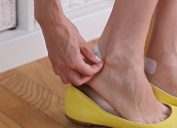5 Signs You Need to Toss Your Walking Shoes, Podiatrists Say
You'll need to replace your footwear as soon as possible to prevent future problems.
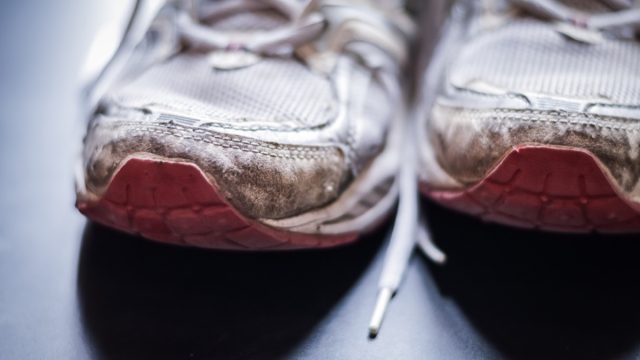
Once you find a good pair of walking shoes, it can be hard to say goodbye. But if you're wearing your favorite footwear on a regular basis, you should know that they aren't meant to last forever. Shoes wear down over time—and if you don't replace them, you could be putting yourself at risk of developing different foot problems down the line. So, how do you know when it's finally time to get rid of them? We asked experts for the red flags to look out for. Read on to discover five signs it's time to replace your walking shoes.
RELATED: 5 "Comfortable" Shoes That Are Actually Bad for Your Feet, Podiatrists Say.
1
They can bend in ways they shouldn't.
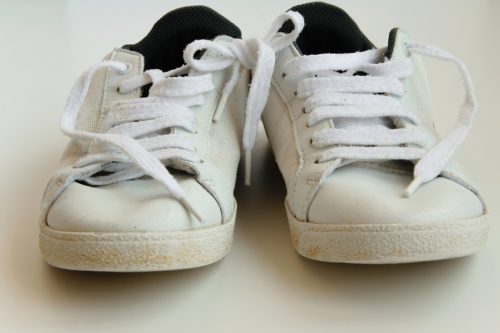
It might be easier to put on shoes that aren't too stiff, but that doesn't mean extra bendy shoes are better for you. If your walking shoes are bending at the mid foot as opposed to the forefront, they need to be replaced, according to Samantha Landau, DPM, a foot expert and an attending physician New York College of Podiatric Medicine in the Orthopedics.
"If the midfoot begins to bend, then the shoe is no longer suitable for wear," Landau warns.
In that case, it likely means the midsole of your shoe has become compressed, Sandeep Singh, MD, an orthopedic surgeon at ClinicSpots, shares.
"To test the midsole, twist the show from heel to toe. If it bends easily or excessively, then it means that the midsole has lost its integrity and stability," Singh says. "When the midsole is compressed, your shoes lose their bounce and responsiveness, which can affect your comfort and performance."
RELATED: 8 Retail Brands That Sell the Best Quality Walking Shoes.
2
The cushioning feels flatter.
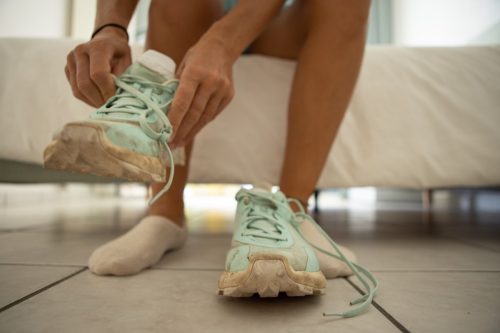
Your shoe's structural integrity could also be compromised from the inside. Mauricio Garcia, MD, an orthopedic surgeon and the project support coordinator for Hyper Arch Motion's orthopedic sneakers, says you should pay attention to whether the cushioning inside feels flatter or less supportive over time.
"Reduced cushioning inside the shoe fails to absorb the impact of each step adequately," Garcia warns. "This causes increased pressure on your feet and can contribute to foot discomfort, fatigue, and potentially even structural problems."
As Josh Weight, a physical therapist and the director of Gravity Physio, further explains, you want your walking shoes to make it feel like you're walking on "fluffy marshmallows" at all times.
"If you feel like you're walking on concrete instead, that's a telltale sign that your shoes have lost their cushioning mojo," he says.
3
They just don't fit right.

Many people don't realize that their feet can change in size over time, Cameron Bennet, a qualified podiatrist and owner of My Family Podiatry, tells Best Life.
"So a shoe that was once a perfect fit may no longer suit you," Bennet says. "Wearing shoes that are not the right size can cause blisters, calluses, corns and ingrown toenails, as well as alter your gait, which can lead to ankle, knee, hip, or back issues."
To check the fit of your walking shoes, Singh recommends putting them on and walking around for a few minutes.
"You should feel comfortable and secure in your shoes, with enough room for your toes to wiggle and your heel to stay in place," she says.
Or, you can also check the width and length of your walking shoes by tracing your foot on a piece of paper to compare to the outline of your footwear.
"If your foot is wider or longer than the shoe, then it means that your shoes are too small for you," Singh explains. "If your foot is narrower or shorter than the shoe, then it means that your shoes are too big for you."
RELATED: 5 Signs You've Actually Been Wearing the Wrong Shoe Size, According to Doctors.
4
The soles appear to be uneven.
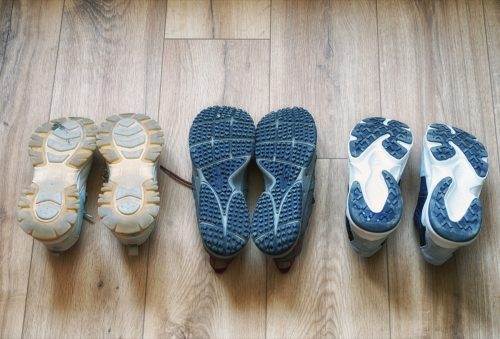
The soles of your walking shoes are naturally going to wear down with time. But if this causes unevenness, that's a major red flag, according to Garcia.
"Unusual wear patterns, especially if the wear is in one specific area of the sole, are a good indicator that the support and alignment of the shoe have broken down," he says.
If you continue wearing walking shoes with uneven shoes, you could be putting yourself at risk in more ways than one.
"Uneven wear patterns on the soles can affect the distribution of forces when walking, leading to imbalances, altered gait, or abnormal walking mechanics, as well as increased stress on various parts of your feet that can result in foot pain and injury," Garcia says. "They can also put you at risk for slips and falls."
For more foot health advice delivered straight to your inbox, sign up for our daily newsletter.
5
There is visible wear and tear.
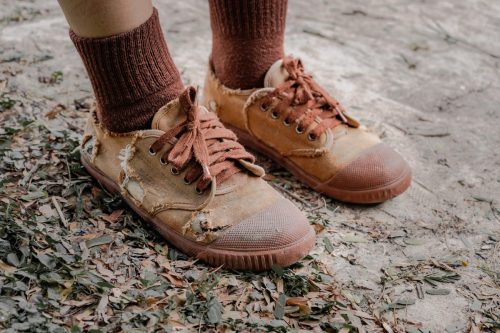
Walking shoes are usually considered "worn out" if they've had 300 to 500 miles of usage, Bruce Pinker, DPM, a board-certified podiatrist and foot surgeon, tells Best Life. But if you aren't sure how long you've walked in yours, look at the shoe itself. Is the heel counter worn out?
"Wearing the shoe with a worn out heel counter, which is the area of the walking shoe behind the heel of the foot, can possibly lead to chafing and irritation in the heel region," Pinker says. "Replacing the shoe can help avoid aggravating the heel."
You'll also want to check for visible wear and tear in the upper, fabric-based part of the shoe, Singh adds.
"Look at the sides, front, back, and top of the shoe and look for signs of wear and tear. If you see holes, tears, rips, stains, or loose stitches, then it is time to get new shoes," he says. "When the upper is damaged, your shoes lose their shape and fit, which can cause friction, pressure, or irritation on your feet."
